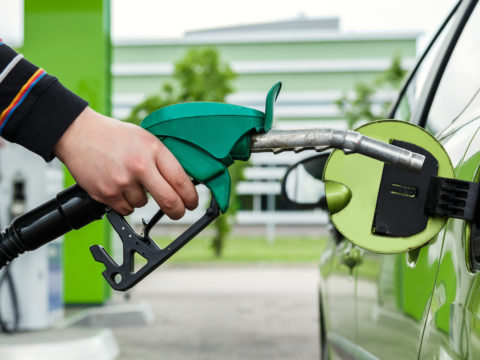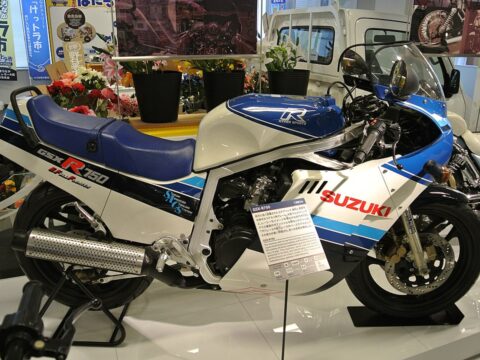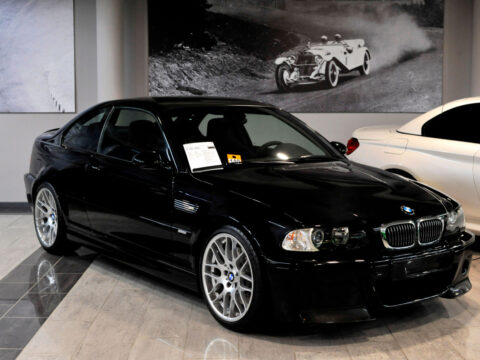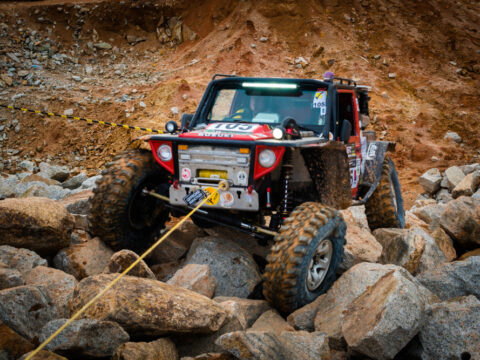Classic motorcycles have played a significant role in military operations, offering speed, agility, and reliability in some of the toughest environments. From battlefield communication to reconnaissance missions, these two-wheeled machines became essential tools for many armies. In this article, we’ll take a look at 20 classic motorcycles that were used in military operations, highlighting their impact and enduring legacy in military history.
Contents
Harley-Davidson WLA (USA)
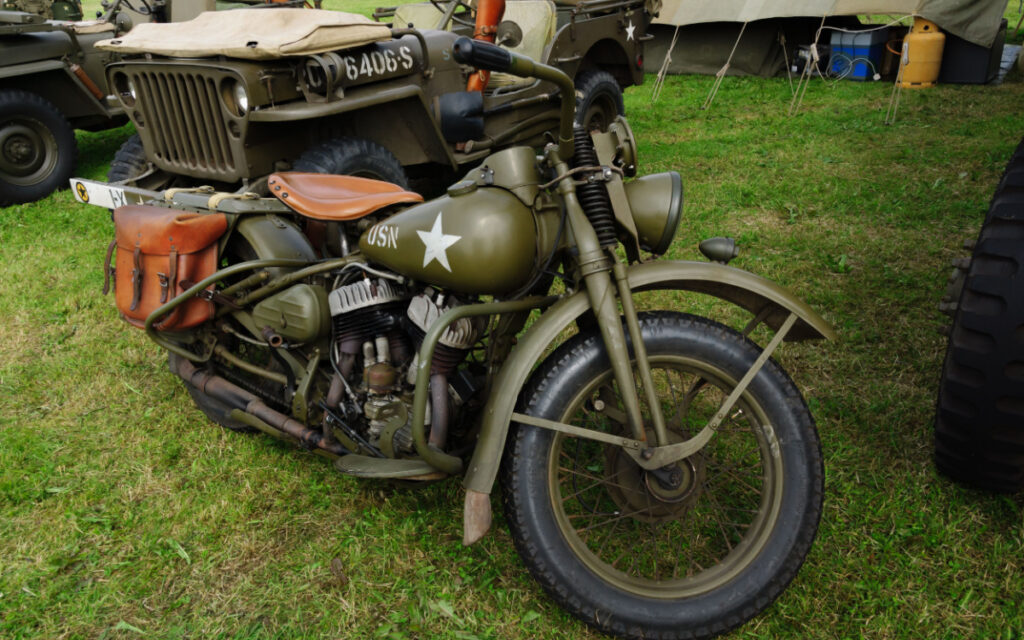
The Harley-Davidson WLA, commonly known as the “Liberator,” was a workhorse during World War II. Designed specifically for military use, it featured a 45-cubic inch V-twin engine that provided both reliability and rugged performance on rough terrain. Its robust design, including a springer front suspension and hand-shift gearbox, allowed it to handle the challenges of wartime conditions. Over 90,000 units were produced for the Allied forces, making it one of the most iconic military motorcycles in history.
BMW R75 (Germany)

The BMW R75 was a highly advanced military motorcycle that became a symbol of German engineering during World War II. Equipped with a 745cc flat-twin engine and a sidecar, it featured an innovative drive system that powered both the rear wheel and the sidecar wheel, offering superior off-road capabilities. Its reverse gear and locking differential made it particularly effective in desert and mountainous terrains.
Indian 741 (USA)
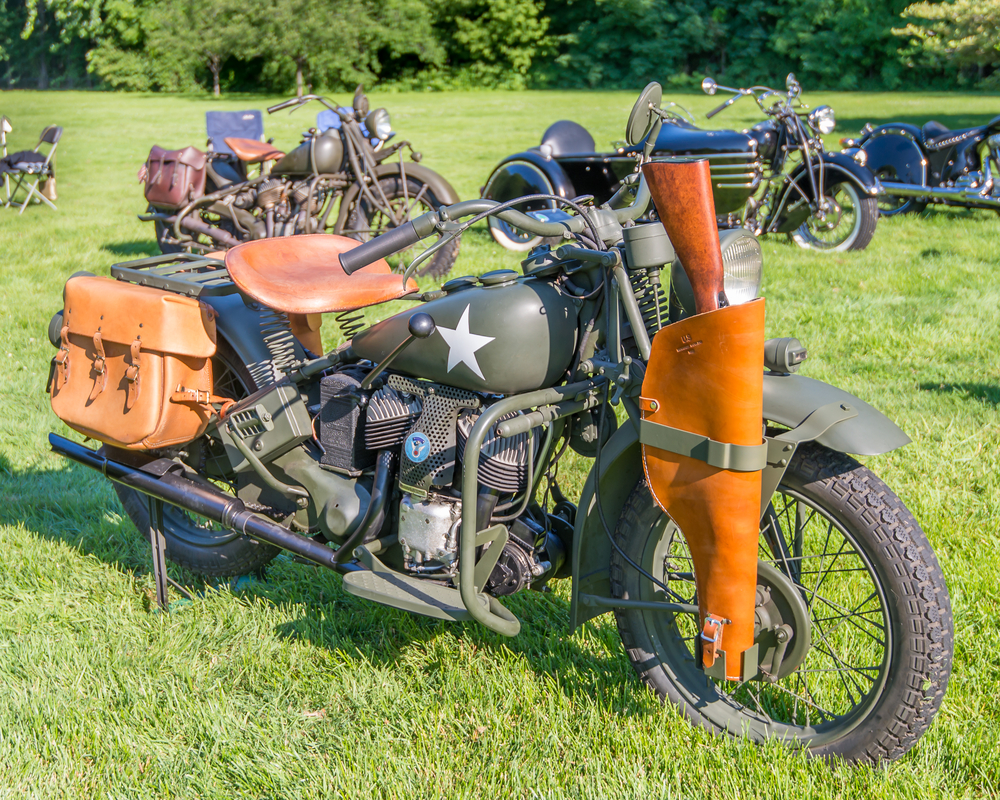
The Indian 741 was developed to meet the needs of the U.S. military during World War II. It had a 500cc side-valve V-twin engine that provided enough power for patrol and reconnaissance missions. Despite being overshadowed by the Harley-Davidson WLA, the Indian 741 was valued for its reliability and lighter frame, which made it easier to handle in challenging environments.
Norton 16H (UK)
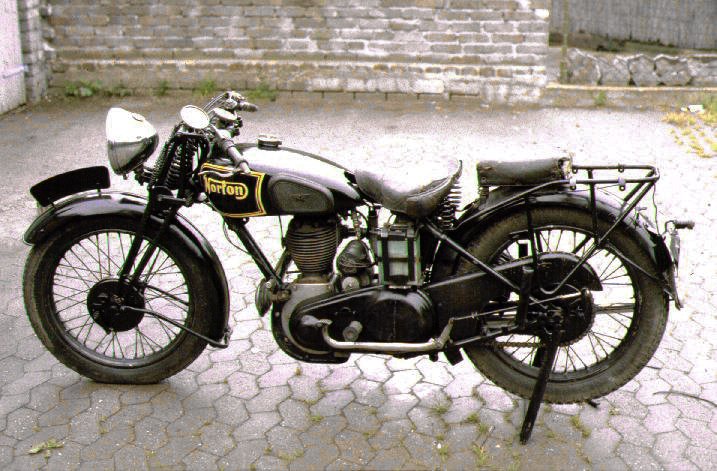
The Norton 16H played a crucial role for British forces during both World Wars. Powered by a 490cc single-cylinder side-valve engine, it was known for its dependability in rough conditions. Its rigid frame, coupled with a simple design, allowed for easy repairs in the field. It was widely used for dispatch riding, reconnaissance, and convoy escort duties.
Zündapp KS750 (Germany)
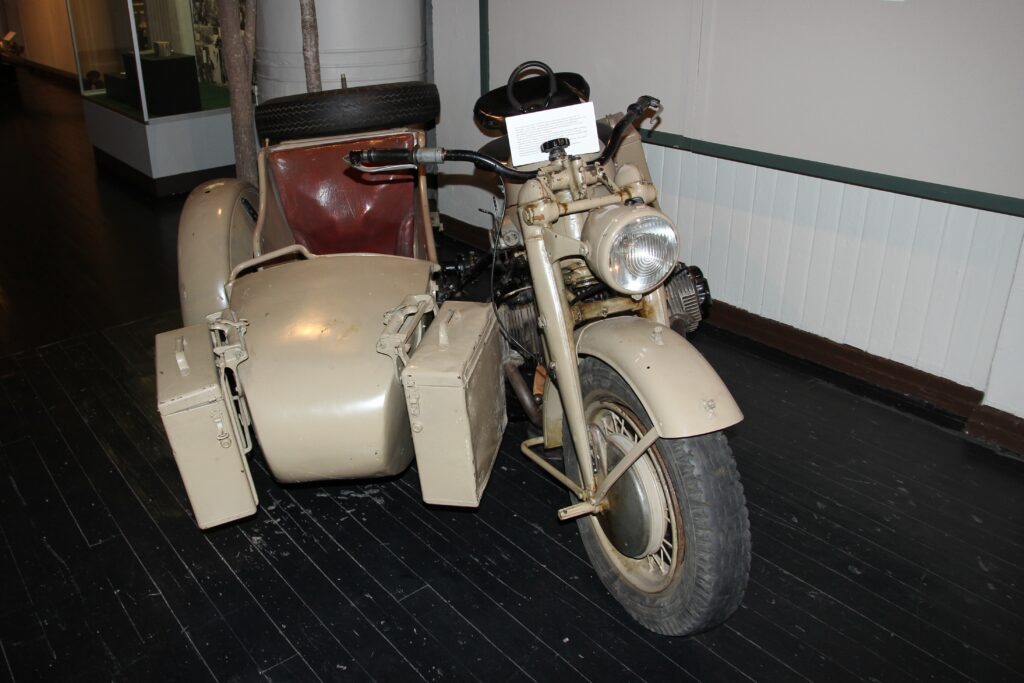
The Zündapp KS750 was a robust motorcycle with a 751cc flat-twin engine, built to serve the Wehrmacht during World War II. Similar to the BMW R75, it featured a sidecar and drive to both the rear and sidecar wheels, ensuring exceptional off-road performance. Its low center of gravity and reverse gear made it highly maneuverable in difficult terrains, from deserts to snow-covered roads.
BSA M20 (UK)

The BSA M20 was a 500cc single-cylinder motorcycle that served the British military throughout World War II. Renowned for its durability and simplicity, the M20 was well-suited for long-distance travel and was often used for convoy escort and dispatch riding. Its large fuel tank allowed for extended range, while its heavy-duty suspension helped it navigate rough roads.
Royal Enfield WD/RE “Flying Flea” (UK)

The Royal Enfield “Flying Flea” was a lightweight motorcycle designed for airborne troops. With a 125cc two-stroke engine, it was small enough to be dropped by parachute, making it ideal for rapid deployment behind enemy lines. Its simplicity and ease of transport made it a key asset for quick mobility in post-drop operations.
Triumph 3HW (UK)
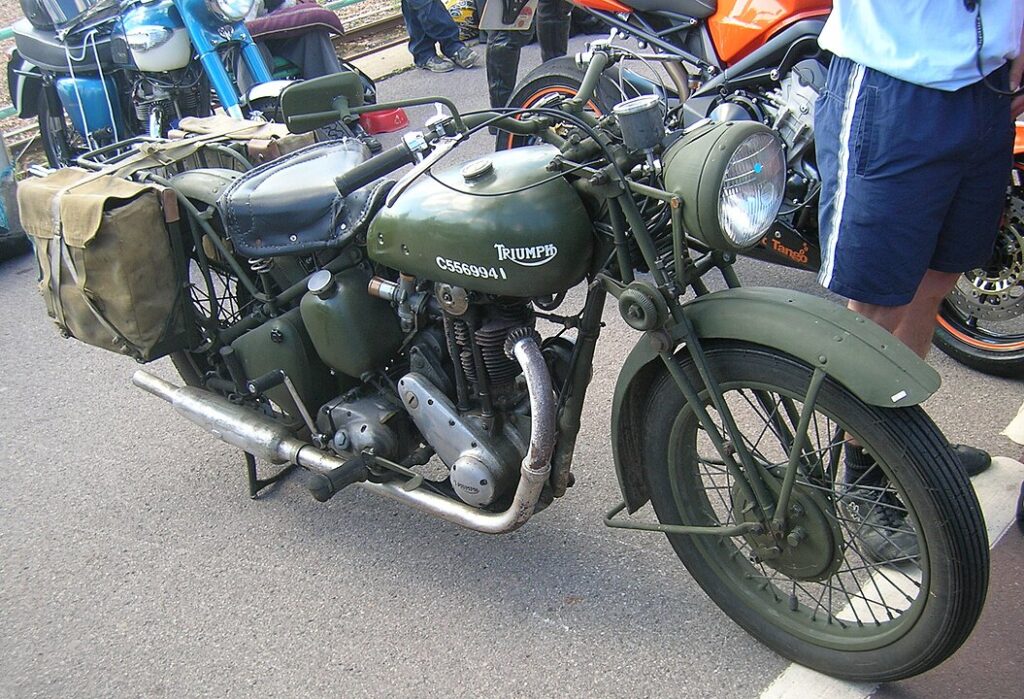
The Triumph 3HW was a 350cc single-cylinder motorcycle that saw extensive service during World War II. Its lightweight frame and nimble handling made it perfect for dispatch riders and reconnaissance missions. The 3HW was known for its reliability and ease of maintenance, essential qualities for motorcycles used in war zones.
Moto Guzzi Alce (Italy)
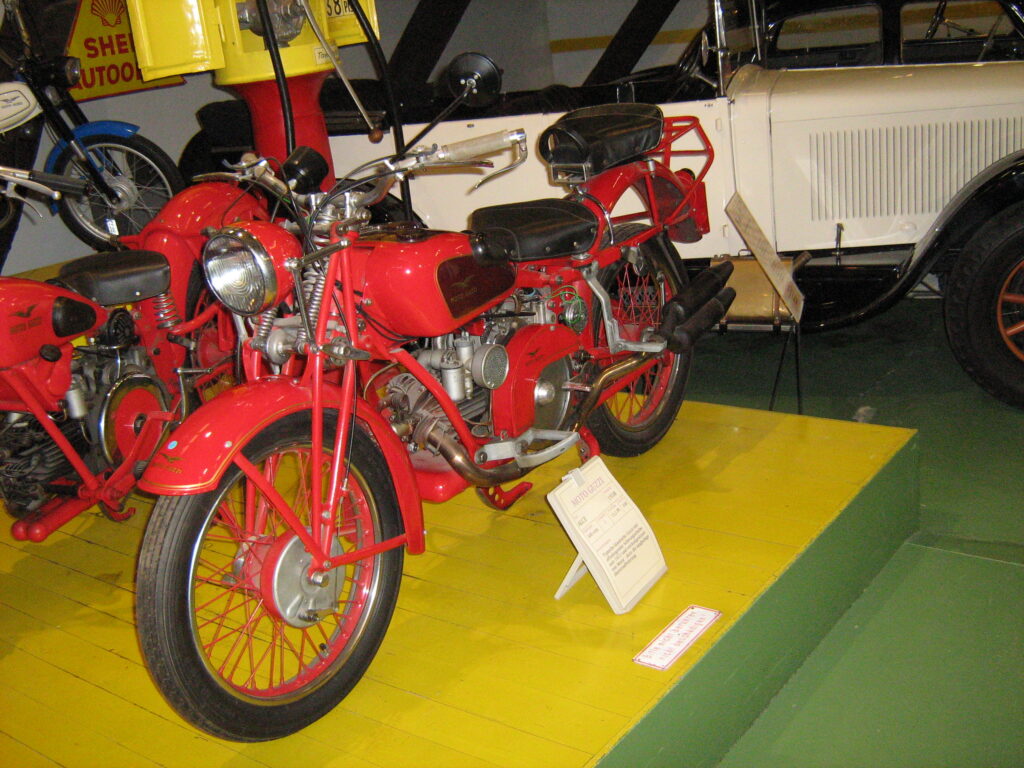
The Moto Guzzi Alce was an Italian military motorcycle used during World War II, featuring a 500cc single-cylinder engine. Its rugged frame and high ground clearance made it suitable for the challenging terrains of North Africa and the Balkans. The Alce was a favorite for Italian forces, offering both durability and easy field maintenance.
Harley-Davidson XA (USA)
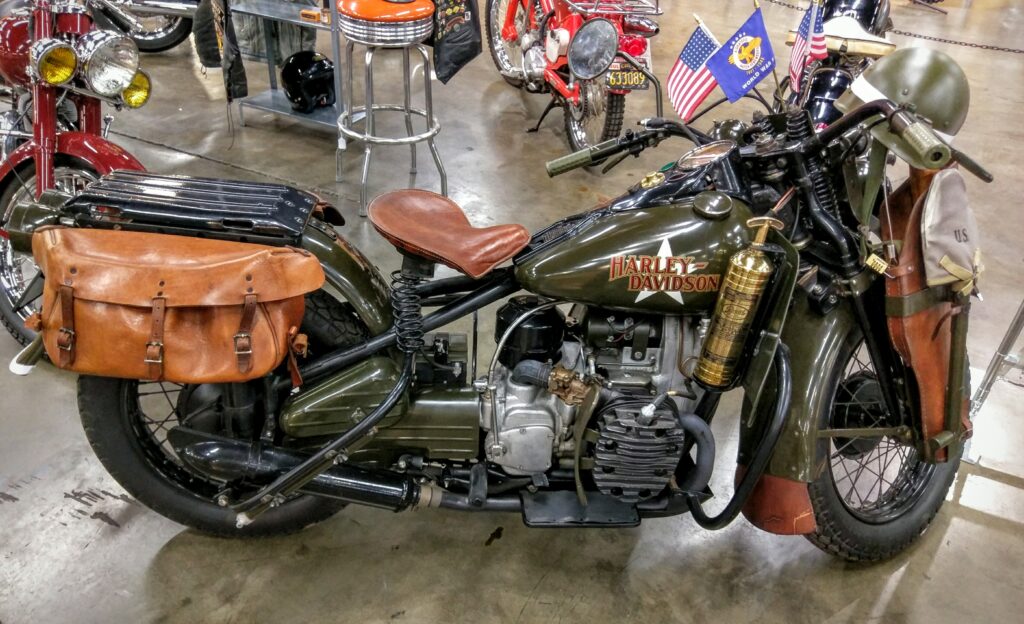
The Harley-Davidson XA was an experimental motorcycle developed for the U.S. Army during World War II. It featured a flat-twin engine and shaft drive, modeled after the BMW R75. Although only about 1,000 units were produced, the XA offered improved cooling and performance over Harley’s traditional air-cooled designs, making it well-suited for desert operations.
Matchless G3/L (UK)
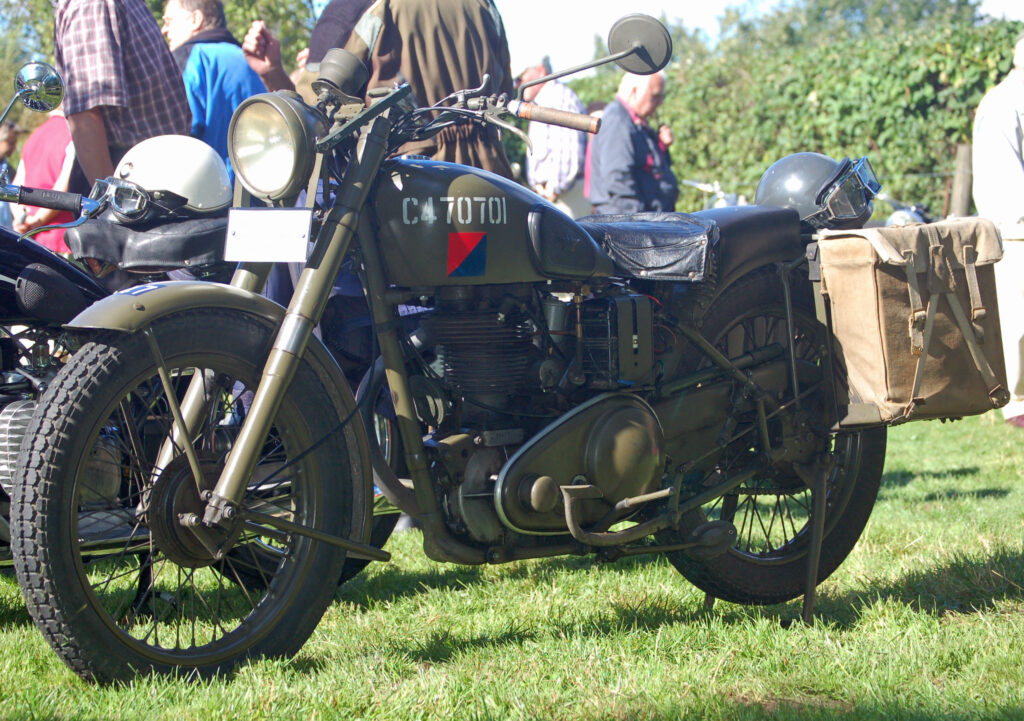
The Matchless G3/L was a 350cc single-cylinder motorcycle that became a mainstay for British forces during World War II. Its lightweight frame and advanced telescopic front forks provided excellent handling in rough conditions. The G3/L was particularly favored for reconnaissance and communication duties, thanks to its reliability and ease of repair.
DKW NZ 350 (Germany)
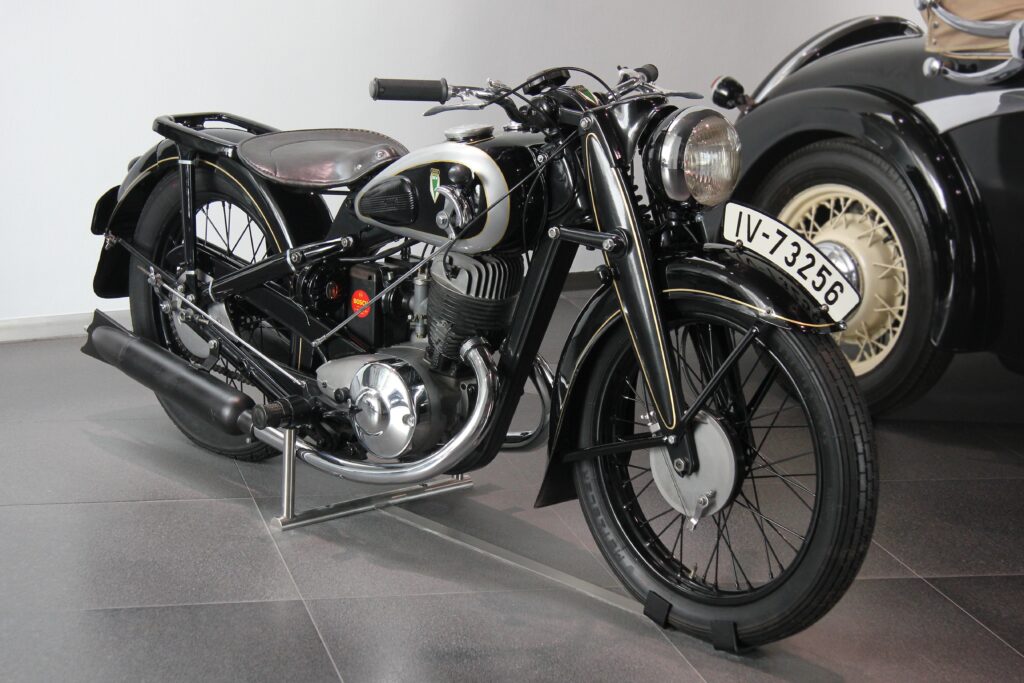
The DKW NZ 350 was a German military motorcycle known for its two-stroke engine and robust build. With a 346cc single-cylinder engine, it was lightweight yet powerful, making it ideal for both road and off-road use. The NZ 350 was widely used for reconnaissance and communication roles, valued for its speed and agility.
Csepel 250 (Hungary)

The Csepel 250 was a Hungarian military motorcycle that saw service during World War II. Its 250cc single-cylinder engine provided enough power for scouting and communication tasks. Known for its durability and reliability, the Csepel 250 was a practical choice for operations in Eastern Europe.
Velocette MAC (UK)
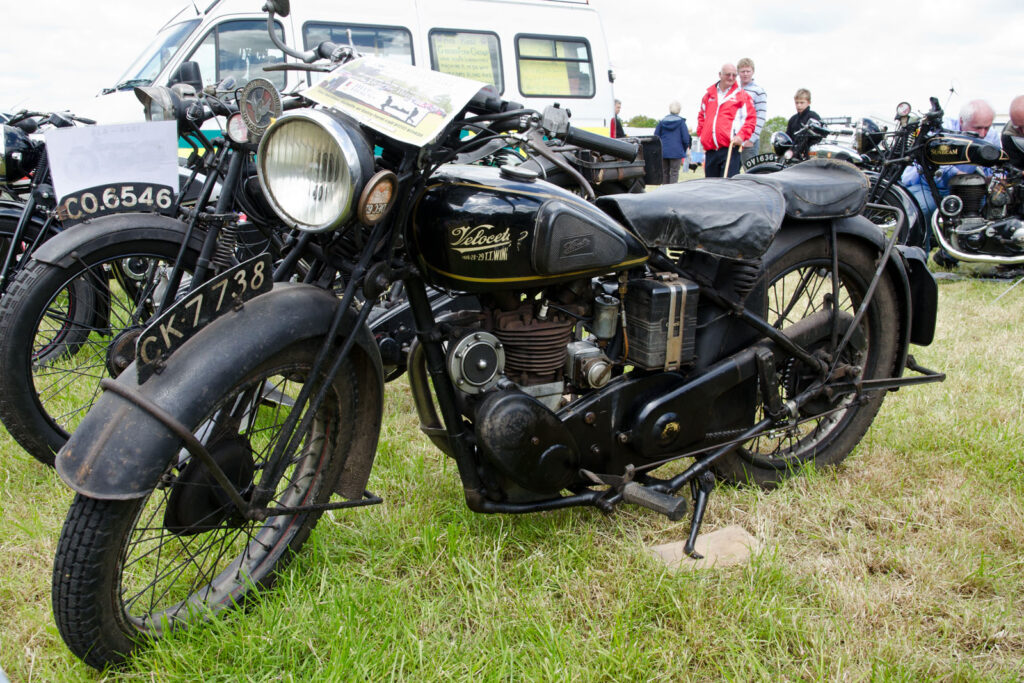
The Velocette MAC was a 350cc single-cylinder motorcycle used by the British military, particularly during World War II. Known for its reliable engine and excellent handling, it was a popular choice for dispatch riders. Its lightweight design made it ideal for navigating difficult terrains, and it was known for its longevity and minimal need for repairs.
Ariel W/NG (UK)
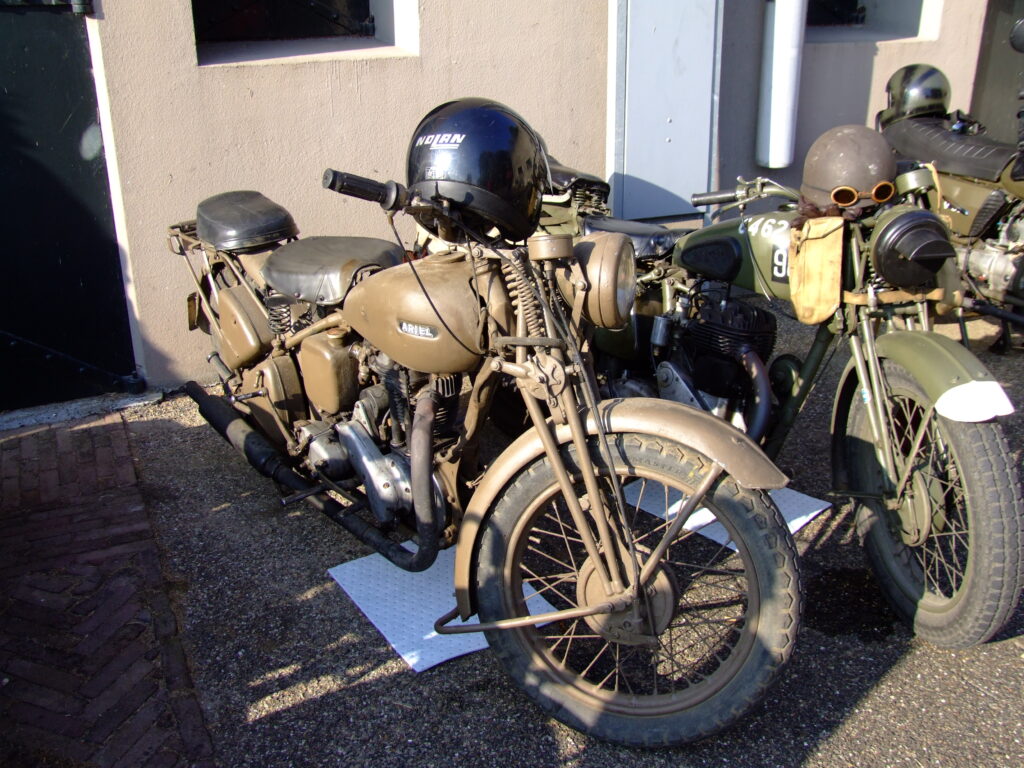
The Ariel W/NG was a British military motorcycle powered by a 350cc single-cylinder engine. It was used extensively during World War II for reconnaissance and communication duties. The W/NG was appreciated for its robustness and simple design, which allowed for easy maintenance in the field.
Excelsior Welbike (UK)
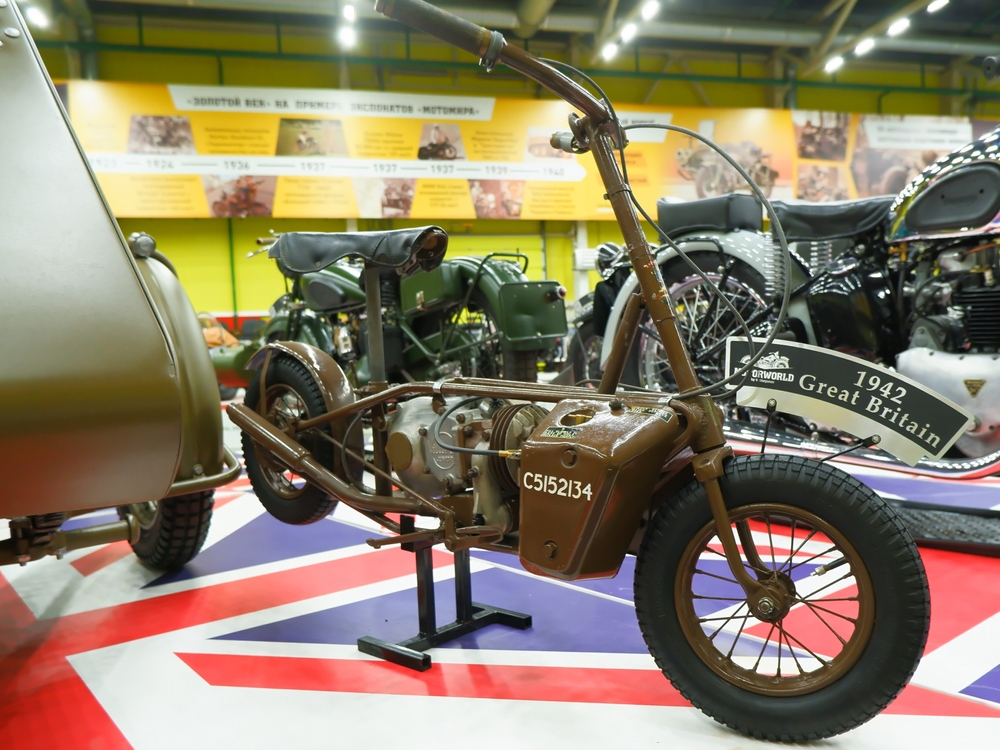
The Excelsior Welbike was a tiny motorcycle designed for use by British airborne forces during World War II. With a 98cc two-stroke engine, it was small enough to be packed into a glider or dropped by parachute. Despite its size, the Welbike was a valuable asset for quick mobility after landing, providing troops with fast transportation in enemy territory.
Rikuo Type 97 (Japan)
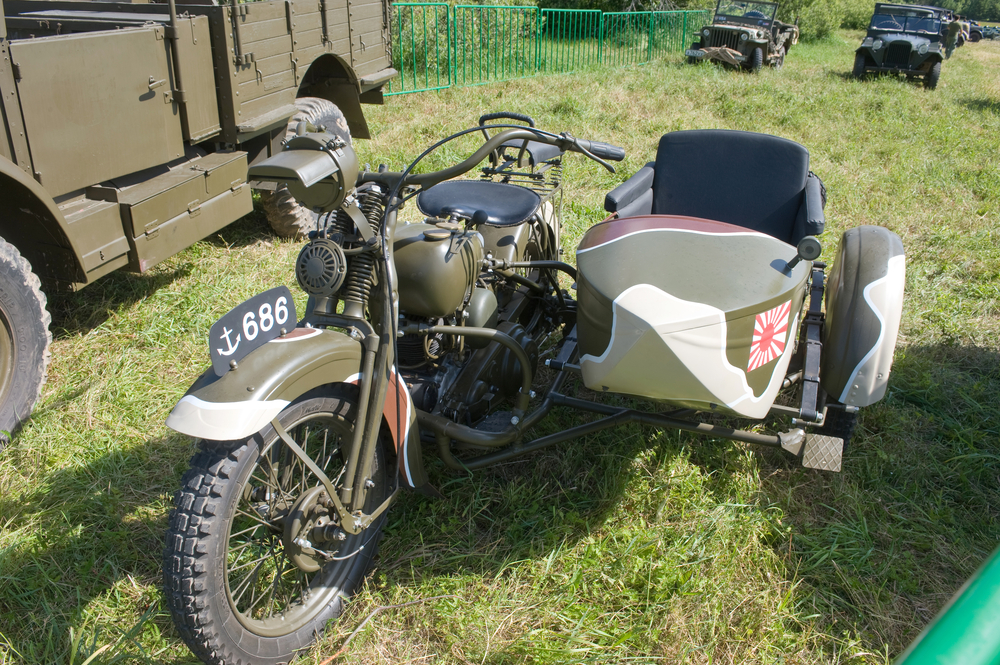
The Rikuo Type 97 was a Japanese military motorcycle based on the design of the Harley-Davidson. It featured a 747cc V-twin engine and was often used with a sidecar for increased versatility. The Type 97 saw extensive use by the Japanese military during World War II, providing reliable transport across challenging terrains in the Pacific.
Sunbeam S7 (UK)
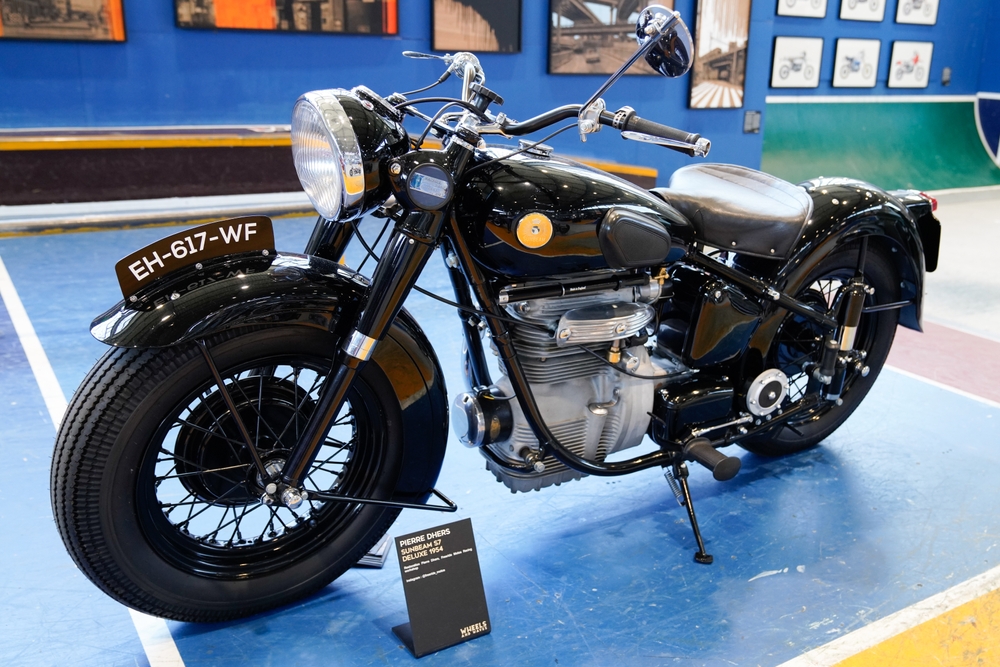
The Sunbeam S7 was a British motorcycle used by the military in the post-World War II era. With a 500cc flat-twin engine, it was known for its smooth ride and distinctive styling. While it wasn’t as heavily used during the war, the S7 became a popular post-war military vehicle for patrol and escort duties.
Jawa 350 (Czechoslovakia)
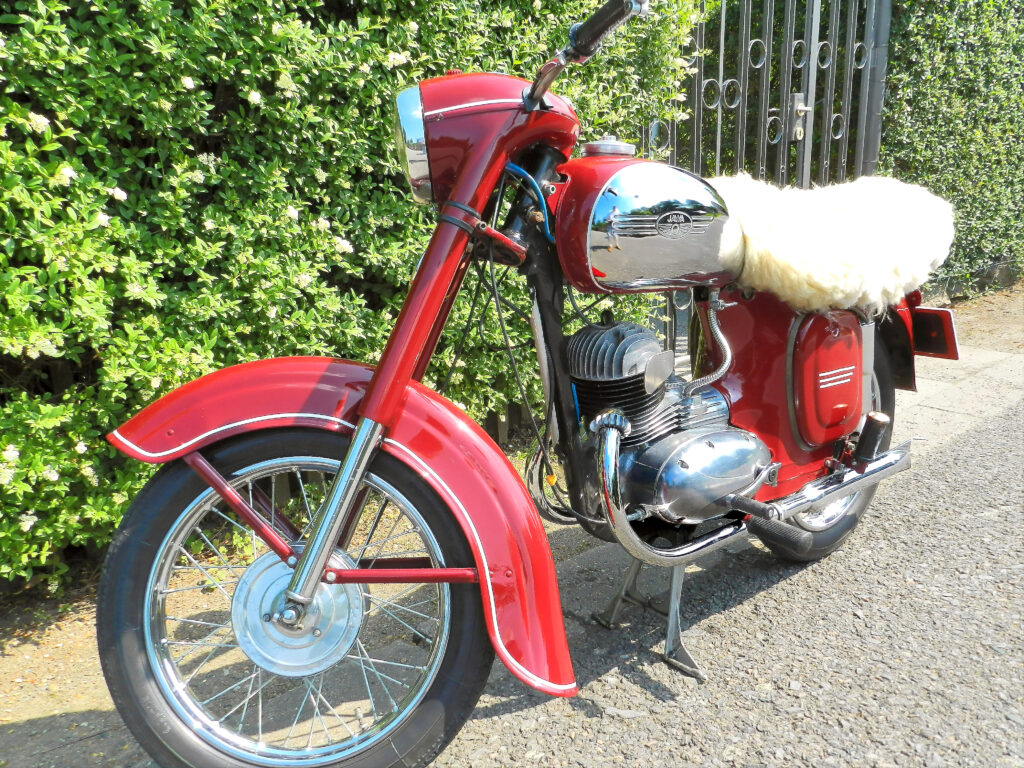
The Jawa 350 was a Czechoslovakian military motorcycle known for its two-stroke 350cc engine. Its lightweight design and agility made it a favorite for military dispatch riders. The Jawa 350 was used during World War II and beyond, thanks to its simple construction and ease of maintenance.
Condor A580 (Switzerland)
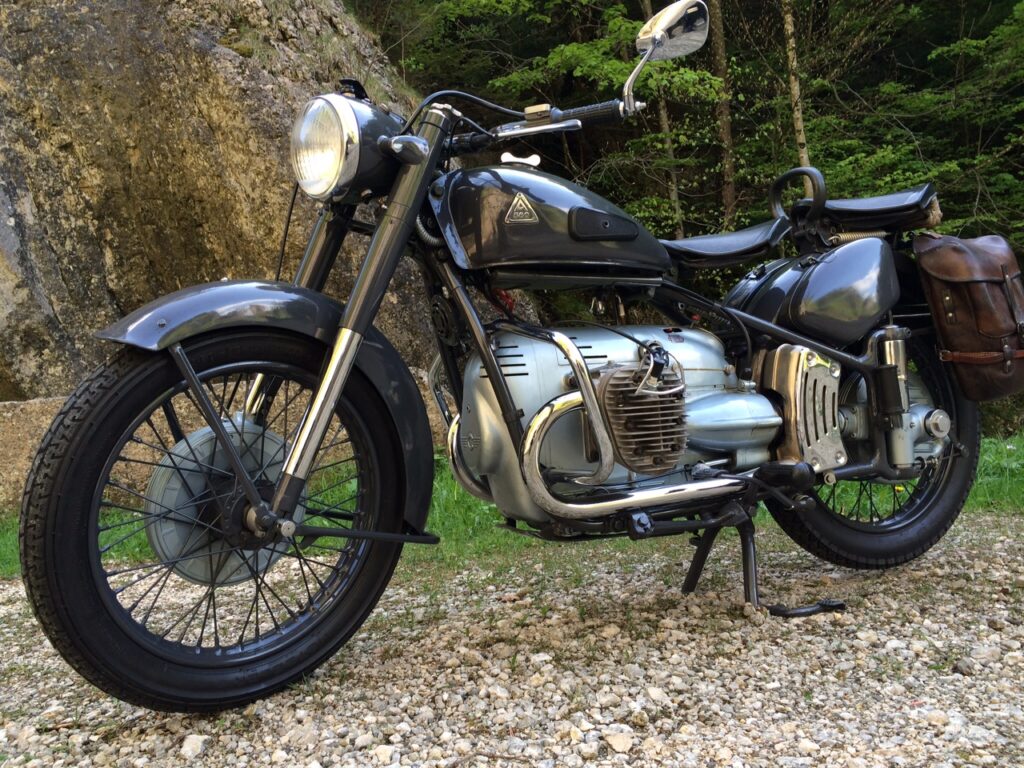
The Condor A580 was a Swiss military motorcycle featuring a 580cc flat-twin engine. Known for its reliability and rugged design, it was used by the Swiss Army for patrol and transport duties. The A580’s durable construction and ease of maintenance made it a popular choice in the Alps’ challenging terrain.
This article originally appeared in MyCarMakesNoise.
More from MyCarMakesNoise
Top 19 Electric Cars for Eco-Friendly Summer Drives

If you’re planning a road trip this summer and want to do it in an eco-friendly way, choosing the right electric car can make all the difference. Electric vehicles (EVs) offer a sustainable option for travel, combining efficiency with performance. Read More
20 Surprising Facts About the Revolutionary Tesla Cybertruck

The Tesla Cybertruck has captured the imagination of car enthusiasts with its futuristic design and cutting-edge technology. Here are some impressive facts about the Tesla Cybertruck that showcase why it stands out in the automotive world. Read More
Discover 20 Intriguing Facts About the Iconic Oldsmobile Toronado

The Oldsmobile Toronado is a fascinating piece of automotive history, known for its innovative design and powerful performance. Here are some fascinating facts about the Oldsmobile Toronado that highlight its unique place in the world of classic cars. Read More

